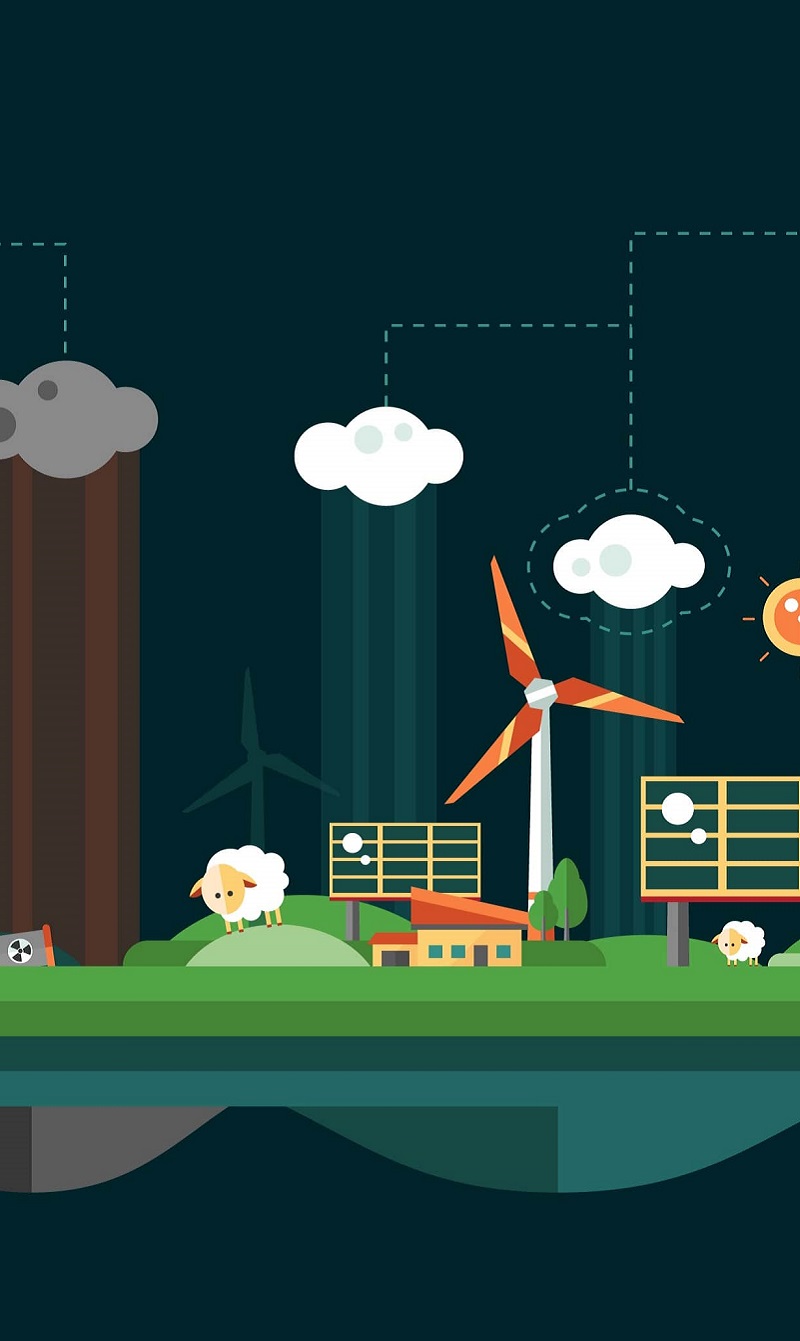Investing in green
Signs are showing that green economy investments will continue to be successful and it’ll not see an end anytime soon. If anything, it’ll only escalate from here, according to the director of strategy and ESG indices from S&P Dow Jones Indices.
A global awareness about the need to preserve and protect the earth’s environment has surged and it’s not only to reduce the transmission of green house gases, but also to avoid health risks. More and more businesses and youths are developing innovative products to support a more sustainable living. The benefits of these alternatives are also saving costs in the long run.
Speaking at the WIEF Roundtable on green economy is Cheng Tianyin, director of strategy and environmental, social and governance (ESG) indices at S&P Dow Jones Indices, Singapore, who believes in the importance of investing in a green economy. Tianyin believes investing in green economy is crucial in achieving the sustainable development goals and transitioning to low carbon economy.
Climate risks are a material concern for long-term investors and ensuring that these risks are properly assessed is important.
‘There’s a global challenge we can’t ignore: we’re already receiving strong signals of how adverse weather conditions impact on national economies and communities at a scale unseen before. Failing to address climate change will most certainly have higher costs in comparison with the investments we can implement today,’ she explains.

‘Climate risks are a material concern for long-term investors and ensuring that these risks are properly assessed is important. Assets can be exposed to physical risks from the direct impacts of climate change, regulatory risk in carbon-intensive industries, competitive risks as companies prove to be more or less proactive in addressing climate change, as well as reputationaland litigation risks,’ she continues.
Climate-related investments, according to Tianyin, can provide investors with some protection against climate risks while offering long-term, sustainable investment options. ‘Climate change-related investments can also provide a hedge against carbon-intensive assets that could be suddenly impacted by carbon pricing or regulatory policy,’ she says as she explains more here before the WIEF Roundtable.
What are the challenges of investing in a green economy?
The common problem that underpins the systemic challenge is a general lack of disclosure and analysis on the financial opportunities and risks, both short and long term, associated with ESG. Sustainable development requires significant capital but this can only be provided if there’s enough information flowing along the investment chain. Markets can only be efficient if there is a timely and relevant flow of information.
Trucost, a company which makes estimates about the hidden costs of unsustainable use of natural resources by companies, has analysed the disclosure of 6,300 firms in its Environmental Register database and only 46 per cent provide standardised quantitative information on carbon emissions, only 36 per cent on air emissions and only 21 per cent on water dependency. Data’s often insufficiently robust, financially relevant or forward-looking, meaning that market participants can’t incorporate this information into the investment process.
Challenges of investing in green economy include:
Asset owners have locked up significant capital in unsustainable, carbon-intensive investments. They’re seeking investments that deliver long-term enhanced returns while at the same time helping to fund the transition toward a greener and more sustainable economy. There’s limited information available today on how assets are performing on ESG issues and the link to financial return over the longer term. This is impeding capital allocation to sustainable investments.
Asset managers are usually only provided with a relatively short-term mandate by the majority of institutional asset owners and are monitored on a quarterly basis with limited or no requirement to report on the ESG performance of their portfolios. This drives short-term and often unsustainable behaviour.
Companies across many sectors may need to invest significantly in order to avoid material ESG risks and take advantage of the transition to a more sustainable economy. Issuers, however, complain that there’s not enough capital available for the projects they need to invest in to drive the shift to a more sustainable business model at scale. This is often due to a lack of clarity about the financial and ESG benefits of these projects over both the short and long term.
Governments have made ambitious commitments, such as the Paris Agreement on climate change and the Sustainable Development Goals (SDGs), but they lack capital required to achieve their goals. Capital markets will have to help fund the transition required if these international and national commitments are to be met.
Development banks can initially drive uptake of green or sustainable projects but they often lack private sector partners to match their contributions and continue to fund these projects to scale.
What are the investment drivers or potential of the green economy?
In achieving the sustainable development goals and transition to low carbon economy, huge amount of investment is needed. The vast bulk of green and climate finance will come from the private sector as there isn’t enough money in the public space. This requires mobilisation of private money which can’t be achieved without a combination of public finance and policy frameworks.
Work has been done in this area. Looking at the milestones, there has been tremendous activities and innovation going on in the public policy space. The G20 communique and the Paris Agreement are just indications of that.
The historic Paris climate change agreement entered into force at record speed in November 2016, committing countries to a green future. To date, nearly 190 countries have submitted nationally determined contributions (NDCs) targeting aggressive growth in climate solutions — including renewable energy, low-carbon cities, energy efficiency, sustainable forest management, and climate-smart agriculture. The NDCs offer a clear roadmap for investors and companies looking for profitable investments in climate-resilient infrastructure and assets.
The International Finance Corporation (IFC), a member of the World Bank Group and the world’s largest private sector development bank, finds a USD23 trillion investment opportunity to 2030 if these countries achieve their ambitions to scale up solar and wind energy, increase green buildings, put in place clean transport, and implement waste solutions as laid out in their NDC commitments.
It’s important to note the USD23 trillion estimate covers public and private investment needs; by most assessments, the private sector will need to deliver the lion’s share of capital for climate-smart infrastructure given the magnitude of finance needed and competing demands on limited public resources.
What are some of the products that can be invested in?
Over the past decade, green bonds have emerged as a valuable tool to mobilise the global investment community. Demand for green bonds has increased significantly. According to the Climate Bonds Initiative, the total amount of green-labelled bond issuances amounted to over USD93 billion at the end of 2016, supported by large scale issuances from China. The S&P Green Bond Index was launched in 2014. It was one of the first green bond indices that came to market, designed to encourage market growth and momentum. There are indices such as Fossil Fuel Free Carbon Efficient Index, designed to meet the increasing demand from investors to reduce their investments’ contribution to the global carbon footprint and mitigate the climate risk they are exposed to. Some of the indices from the S&P Thematic Index are with specific focus on ESG issues such as water, clean or alternative energy. Thematic investing is about capitalising on future trends, on reflecting investor beliefs about where the world may be going, whether it’s transition to a low carbon economy or the United Nation’s Sustainable Development Goals.
___________________
Join the WIEF Roundtable discussion on Thursday, 5 Oct 2017 at Hotel Le Méridien, Jakarta, Indonesia.





